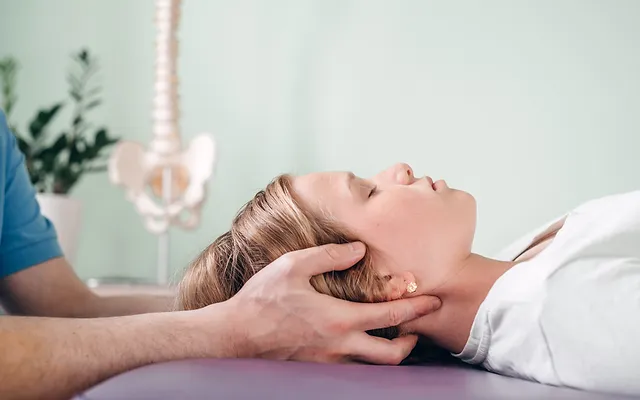
Ever wondered if osteopathy could be the solution to your chronic pain or musculoskeletal issues? This form of manual therapy, which focuses on strengthening and treating the entire body’s musculoskeletal framework, has become popular due to its holistic approach. It is not only about the spine or joints, but osteopathy targets improving overall health through manipulating and reinforcing the musculoskeletal system such as muscles, joints, and spine. Although this treatment method can offer various advantages it also has its own shortcomings. Read on for a detailed analysis of osteopathy’s pros and cons.
What are the main benefits of osteopathy?
Osteopathy can benefit by improving joint mobility, reducing pain, and enhancing overall well-being. It addresses musculoskeletal issues without medication and supports the body’s natural healing processes. Osteopaths tailor treatments to individual needs, promoting recovery and preventing future injuries through personalized care plans.
Osteopathy is known to be a system that handles the whole body rather than treating local symptoms, which is why it has always enjoyed a good reputation. Tension will reduce, blood flow will improve, and a person will be able to restore better posture. Osteopathic treatments may provide help with the above-mentioned conditions such as pain in the back, headaches, and sports injuries- without applying medication.
What are the potential drawbacks of osteopathy?
Potential drawbacks of osteopathy include temporary soreness, limited insurance coverage, and the risk of ineffective treatment for certain conditions. Osteopathy may not address serious medical issues requiring conventional medical intervention.
A health professional needs to be consulted to know when osteopathy can be used. It was observed that although osteopathy was relatively safe, still some soreness or feeling of discomfort might be shown in some patients after the treatment.
One needs to be aware that this system can be applied to only those diseases or disorders for which it is indicated. Moreover, it has little effect on severe injuries or dangerous diseases. Also, insurance companies have different policies for osteopathic care, which in turn affects access.

How does osteopathy differ from chiropractic care?
Osteopathy focuses on the whole body, using manual techniques to treat muscles, joints, and connective tissues, while chiropractic care primarily targets spinal adjustments to alleviate pain and improve function.
Osteopathy treatment approaches, such as lifestyle and postural advice, have been encompassed in osteopathy treatment. While osteopathy and chiropractic care both deal with manual manipulation, osteopathy is more concerned with the holistic approach to how different systems of the body interrelate with one another.
Chiropractic practitioners are more concerned with the sphere of spinal health and alignment in order to resolve different nerve-related problems. Such methods of treatment for osteopaths as stretching, massaging, or mobilization can be applied to achieve universal health.
Can osteopathy help with chronic pain management?
Yes, osteopathy can help manage chronic pain by improving mobility, reducing muscle tension, and enhancing circulation. It offers a holistic approach to pain management, addressing underlying causes and promoting overall well-being.
Treatment plans that are tailored to each individual help provide long-lasting relief. Osteopathy can help in cases of chronic conditions like back pains, arthritis, and even fibromyalgia.
Osteopaths restore balance in the affected areas by finding out those with restriction or imbalance to reduce inflammation and improve function. Regular sessions will bring improved pain management, enhanced flexibility, and an overall better quality of life.
Is osteopathy suitable for children and infants?
Osteopathy is suitable for children and infants, offering gentle techniques to address issues like colic, sleep disturbances, and developmental concerns. Pediatric osteopathy focuses on supporting healthy growth and development.
Osteopaths use light pressure and movements tailored to the child’s needs. Pediatric osteopathy benefits infants and children with conditions such as colic, difficulties related to feeding, and sleep problems.
Techniques are modified to make them safe and comfortable for young patients. Osteopaths treat the whole child, looking at the physical and emotional aspects of the child in order to promote growth and healthy development.

How can osteopathy improve athletic performance?
Osteopathy can improve athletic performance by enhancing flexibility, preventing injuries, and speeding up recovery. It addresses musculoskeletal imbalances, optimizing movement and function.
A tailor-made treatment for the athlete forms the individual needs, which help in achieving better performance with optimal care and prevention strategies. Osteopathy helps athletes to improve joint mobility, muscle flexibility, and circulation. By correcting those areas with tension or imbalance, osteopaths can help athletes to remain in good physical function and avoid injury. Regular osteopathic sessions bring about the best recovery both from training and competing, and this means performing all the better at everything, given any individual’s highest ability.
What conditions can osteopathy effectively treat?
Osteopathy effectively treats conditions like back pain, joint pain, headaches, and postural issues. It offers relief for sports injuries, digestive problems, and stress-related symptoms. Osteopathy’s holistic approach addresses both physical symptoms and their underlying causes for comprehensive care.
Osteopathy is helpful in a large number of conditions ranging from musculoskeletal complaints, for example, back and neck pains, to headaches and migraines. It could further help in gastrointestinal problems, respiratory disorders, and most importantly, tension arising due to stress in a patient. The dealing attitude of osteopaths is with enhancement of self-healing abilities related to situations of both chronic or acute kinds.
The Key Takeaway
Pros and cons should be taken into account carefully before opting for osteopathy. This kind of treatment offers significant advantages as regards pain relief and general health due to its comprehensive approach towards musculoskeletal problems which are chronic in nature. However, it is not applicable universally but rather depends on specific cases of diseases besides being an expensive undertaking. You might want to contact a certified osteopath to talk about your needs and see if you should go ahead with going through this process or not because there is no one-size-fits-all solution for particular health problems connected with this therapy.

